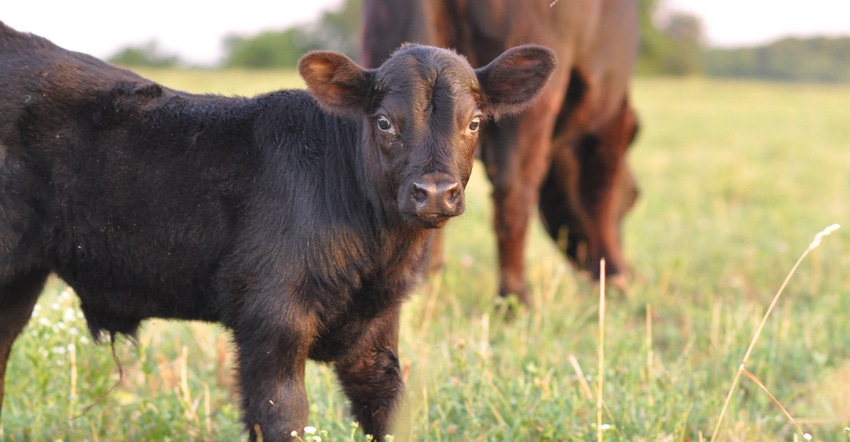
Fall calving: the form of calving that occurs from August to November. Does not require multiple clothing layers to check cows and heifers that may or may not be close to calving.
Overall, it should be an easier time to calve.
“In a normal year of fall calving, cows are calving out on grass, the environment is very clean, and it is more of a low-stress scenario,” says Travis Meteer, Extension educator at the University of Illinois. “Compared to spring calving, there are less problems with scours, pulling calves and drastic weather changes.”
Fall calving has perks, and Meteer shares a few more ways to make fall a successful calving experience:
1. Meet nutrient demands. As the first frost occurs, grass availability is diminishing while calves are getting older and milking more from their dam. In turn, the cow needs more nutrients to support herself and a growing calf. So, either be prepared with fall grazing options or offer harvested feedstuffs.
2. Implement creep feeding. During the growing season for spring calves, they can eat grass. Fall calves may not have the same nutritious grazing opportunities. Meteer suggests creep feeding calves to provide a supplemental nutrition source. Start creep feed once periods of forage dormancy and winter begin.
3. Check nutritional values. Meteer recommends producers go the extra mile to test hay and other feedstuffs prior to feeding. You should offer high-quality hay and grains that will provide the most nutritional value to help with functions such as lactation and breeding.
4. Consider early weaning. Traditional weaning occurs when calves are 150 to 180 days of age; however, early weaning may be the best option for fall-born calves. In some situations, feed costs are higher with higher-milking, higher-performing cows. In other scenarios, producers don’t have facilities that are set up to feed cows and calves as pairs. In these instances, Meteer says early weaning calves at 90 to 100 days is an option. Feeding calves off their dams will allow cows to dry up and better match available feed resources.
5. Don’t forget to vaccinate. If a calf has consumed colostrum from a cow, then the passive immunity protects the calf for that first 75 days of their life. After that, calves are expected to build their own immunity in their own environment. Health protocols such as pre-weaning vaccinations can boost their natural immunity, especially during stressful times. These vaccinations are typically most effective after 100 days of age, but some products may work before that based on whether the vaccine is modified live or killed. Check with your veterinarian to find the right product for your situation.
6. Rebreed on time. Besides managing the current pair, you have to prepare the cow for the next calving season. Proper nutrition will help keep cows at a body condition score of 5 to 6, which is ideal for breeding. Aim to rebreed cows 75 to 85 days post-calving to reduce the length of the calving interval. The sooner cows are bred, the less time you’ll spend trying to artificial inseminate or with a bull trying to breed cows in winter weather conditions.
In the end, a fruitful calving season is more than having live calves on the ground. You also have to give the pair what they’ll need to grow and rebreed through winter weather.
About the Author(s)
You May Also Like






